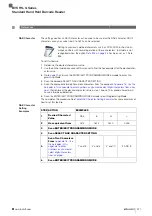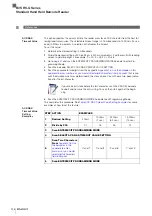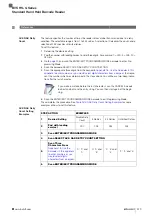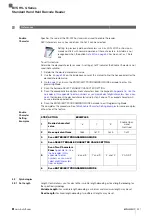
224
BVS HS-Q Series
Standard Hand Held Barcode Reader
5
References
5.1
RS-232
Parameters
5.1.1 RS-232
Baud Rate
Baud rate is the number of bits of data transmitted per second. Set the reader's baud rate to
match the baud rate setting of the host device. With an improper baud rate setting, data may not
reach the host correctly.
Stop Bits
The stop bit(s) at the end of each transmitted character marks the end of transmission of one
character and prepares the receiving device for the next character in the serial data stream. The
number of stop bits selected (one or two) depends on the number the receiving terminal is pro-
grammed to accommodate. Set the number of stop bits to match host device requirements.
Parity
This feature specifies parity required for sending and receiving data. A parity check bit is the most
significant bit of each ASCII coded character. Select the parity type according to host device
requirements.
- Select None when no parity bit is required.
- Select Odd parity and the parity bit value is set to 0 or 1, based on data, to ensure that an odd
number of 1 bits are contained in the coded character.
- Select Even parity and the parity bit value is set to 0 or 1, based on data, to ensure that an
even number of 1 bits are contained in the coded character.
Handshaking
Control
The data interface consists of an RS-232 port designed to operate either with or without the hard-
ware handshaking lines,
Request to Send
(RTS), and
Clear to Send
(CTS). Handshaking Control
includes the following options:
- RTS — RTS is asserted during transmissions. CTS is ignored.
- RTS/CTS — RTS is asserted during transmissions. CTS gates transmissions.
- RTS/XON/XOFF — RTS is asserted during transmissions. CTS is ignored. XON and XOFF
gate transmissions.
- RTS On/CTS — RTS is always asserted. CTS gates transmissions.
RTS/CTS Scan Control — RTS is asserted during transmissions. CTS gates transmissions and
controls enable and disable state of reader.
















































